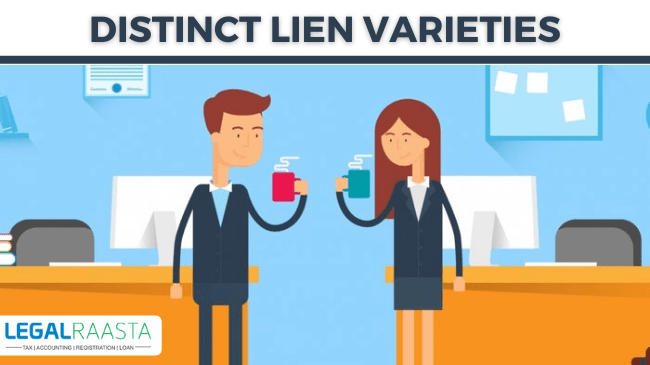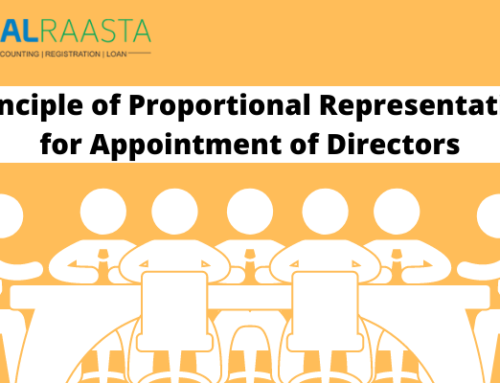Creditors with different rights can be unsecured or secured. An unsecured or extensive creditor has a general claim in opposition to a debtor this claim is not secured by any specific asset of the debtor.
An unsecured creditor has a fragile claim, which might go unpaid in bankruptcy progress. Although, an unsecured creditor may be a secured creditor after a lawsuit and discernment.
A secured creditor, who has an interest in a specific asset, can utilize the court system to grasp the asset and to assure the debt. This clearly represents a notable risk for the business possessor.
What is a lien?
Contents
A lien (pronounce like lean) is a word procured from a Latin word, which means “to tie.” This makes sight, as the motive of a lien is to bind otherwise impede the title of a property. But let’s take a step backward and look at the exact precision of aliens.
According to US law -11 US, $101(37)- the term “lien” signifies a charge over or interest in the property to the assured payment of a debt or performance of a commitment. Actually, a lien is when a banker or creditor obtains an interest in some kind of indemnity, generally real property.
Having a lien categorized on a segment of property permanently “clouds” the property title. If the owner is looking to remortgage, sell, or otherwise transmit the property, the lender or considered buyer will run a title search.
After all lien filings are public record will reveal.
No one wants to take on a property that has any liens filed over it. Liens are generally connected to and are transmitted with the property. They do not follow the property owner individually, they abide by the physical property.
Note: For the purpose of this article we are going to concentrate on property liens. As there are all varieties of liens: mineral liens, even livestock liens, attorney’s liens, artisan liens, aircraft liens!
Liens Authorize Creditors to Claim Rights over Property
It is normally used as a warrant for some kind of legal commitment such as loan repayment. To put it another way, an alien assures that a creditor acquires the right to the property if a borrower failed to meet his legal or financial functions.
Rights of creditors are the legal and procedural provisions that have been put in place to protect creditors and guarantee their right to collect money they are owed from debtors…
Creditors with a legal charge over the debtor’s assets or property are entitled to be paid first once the debtor’s assets have been sold.
Except that the debtor is sagacious and has taken measures to defend his assets, there is a risk that the creditors can grasp assets and take your affluence.
Creditors play an important role in international trade through the supply of goods and services to international traders. Credit is a key driver of international trade growth and innovation as it allows business success goods and services which they can trade with and pay for later.
By provision of credit, creditor-debtor relations are bound to arise and in some cases debtors may not be in a position to repay their debts as and when fall due. It is therefore paramount to understand what rights creditors have in respect to securing payment of their monies owed by debtors.
In order to know if your assets are at risk, it is imperious that you have an understanding of the distinct kinds of liens you may come across as a small business holder:
- Consensual
- Statutory
- Purchase-Money Security Liens
- Non-Purchase-Money Security Liens
- Judgment
- Mechanic’s Liens Tax Liens
One time we will discuss the definite varieties of liens, then we will overlook how creditors may glance to get your assets by these varieties of lien and anything you can do, as a mortal and as a small business holder, to exaggerate your protection over these creditors.
The schemes outlined will address a huge diapason of topics, from forms of property ownership to arranging debt to minimal submission.
Consensual Liens Are Elective
When a creditor is an acquired creditor, the creditor has a consistent lien over the asset securing the debt. Creditors with different rights can be unsecured or secured.
This is an unsalaried lien. To be said in other words, as a condition to securing the loan, the borrower agrees to the mortgage asset as security for the loan and that the borrower can take the asset in the affair of reneging.
A consensual lien is generally a result of a loan or other advances of credit. In many other cases, the asset that is obtained by the borrower fixes the borrower’s obligation to pay for analogous assets. Creditors with different rights can be unsecured or secured.
One common instance is the urban pledge or exploits of trust. In this instance, the buyer of the home assents to a bank taking a security interest in the home when a pledge or deed of trust is registered over the property. Where the lender advances credit to a borrower especially for the purchase of the property that obtains the debt, the lien is called a purchase money security interest.
The habitual epitome of purchases money security interest liens comprises a first promise or agreement of trust on a home, a vehicle loan, and instances where the seller capitalizes the purchase of other properties, such as appliances or furniture along with a credit agreement.
By dissimilitude, a non-purchaser money security interest lien rise when a borrower obtains a loan or an assist of credit and contract property he or she before they own as endorsement securing the loan. For instance, a borrower acquires a $5,000 loan and mortgages a gold Rolex watch worth $15,000 as a shelter for the loan.
Consequently, if the borrower failed to repay the $5,000, the creditor will get the Rolex. A more simple instance of a non-purchase money security interest lien is when a borrower acquires a loan, and assents to a deed of trust on a parcel of actual property the borrower already owns.
Consensual liens are generally non-possessory, meaning that the creditor or lender doesn’t take or keep proprietorship of the indemnity. Nevertheless, it is possible for either variety of consensual lien to be anxious whereby the lender or creditor does take possession of the indemnity.
While this appears uncomplicated, the kind of debt can have a huge impact on the creditor’s right if a debtor defaults. The rules extend from state to state, but characteristics of debt are censorious to understand if assets are to be protected Issues includes:
- Who is holding the property that procures the debt: the debtor or the creditor? In-car loan, the debtor has ownership of the property. When a loan is acquired from a pawnbroker, the creditor has possession of the property obtaining the loan.
- Was the debt sustained to purchase property or not? For instance, a first pledge loan is a purchases money loan since the earnings were used to purchase a place of residence. In disparity, a refinancing loan isn’t a purchase money loan. The homeowner already owns the property.
- What’s the nature of the property to which the lien is fixed? This is often the necessary inquiry when it comes to asset protection. The states, as well as the confederate government, have a wide variety of laws connecting to what assets are secured from creditors and how they are guarded. The primary apparatus for protecting selected assets is a conception called exemptions. In the extract, the law might declare that certain property simply can’t be grasped by the creditor.
The other ordinary kinds of liens are statutory liens and judgment liens.
Statutory liens
Non-consensual liens arise from statutory or common law. The most noteworthy instance is a tax lien, which is to foist by law over the property of a taxpayer. If a taxpayer fails to pay the tax to be indebted to the government, the tax agency can grab their accurate or personal property for the amount of the lien.
Statutory liens don’t result from court cases. They rise from enactment. That means the lien is created below certain situations because a law says that in these situations, a lien may be generated. Creditors with different rights can be unsecured or secured.
The classic instance of a statutory lien is a mechanic’s lien also called builders lien. If you do not pay a contractor who works for your house, state enactment gives him the right to file a mechanic’s lien over your house for the amount he is indebted.
Additionally to consensual liens, there are various distinct kinds of liens that creditors can use to get at your assets to satisfy a debt. In certain situations, creditors acquire security interests by the operation of state laws. These liens include:
Mechanic’s Liens
Mechanic’s liens are lawful agreements that basically reservoir the rights of the filer to look for unpaid recompense. They are generally filed by contractors, subcontractors, or suppliers who never receive payment for work that they performed or materials that they providing on a segment of actual property.
For instance, virtualize that you lease a contractor to build a new swimming pool in your backyard. He does all of the essential work and makes a beautiful pool. But at the end of the project, you refuse to pay the final $5,000 on the contract balance.
The contractor can, of course, accuse you of BREACH OF CONTRACT. But the lien rules give the contractor an additional cure: filing a mechanic’s lien on our property.
Mechanic’s liens make a cloud on title and take shape in public property records. Liens are sometimes said to be “travel with the land” meaning that any person who buys your property would take the property subject to the contractor’s lien
Tax Liens
A tax lien is a lawful claim over the property of a mortal or business that failed to pay taxes in debt to the government. For instance, when a property owner or homeowner failed to pay the taxes on their property, the city or county in which the property is located has the power to place a lien on the property. Creditors with different rights can be unsecured or secured.
The lien acts as a lawful claim over the property for the unpaid amount that’s in debt. Property with a lien affixed to it can’t be sold or refinanced till the taxes are paid and the lien is eliminated.
When a lien is embellished, a tax lien certification is started by the municipality that analysis the amount be indebted on the property, plus any interest or atonement due. These certifications are then auctioned off to the higher auction investor. Investors can purchase tax liens for small as a few hundred dollars if it is a very small property. Although, seniority costs much more.
Judgment liens
A judgment lien is the exact outcome of a lawsuit. If a person is a party to legal action and loses, the court will award harm as a money judgment. This makes the appellant a “judgment debtor” and the complainant a “judgment creditor.” The judgment itself forms the base of the lien.
A judgment lien can be exploited on your property only after somebody accuses you and wins a money judgment in opposition to you. In most countries, the judgment creditor must then record the judgment by filing it with the state.
In some states, a judgment that enters in opposition to you naturally makes a lien on the real asset you own in the county that is, the judgment creditor doesn’t have to record the judgment to obtain the lien.
Most of the holders of unsecured debt like credit card balances, medical bills, and personal loans must get a judgment before they can operate more belligerent collections stratagems. For example, a creditor with a money judgment can embellish your wages and strain your bank account. These practices are frequently used before the creditor retreats to using the lien to recuperate property.
For instance, if you are driving inadequately and disable some in an accident, the harmed person may accuse of damage. To the expanse that your insurance does not cover the judgment, a judicial lien may be placed over your property to assure payment of the claim to the damaged party.
A complainant who acquires a pecuniary judgment is termed as “judgment creditor.” The appellant becomes a “judgment debtor.” The judgment in the legal action offers the basics for the lien.
If the debt is not reimbursed, then the judgment creditor can then look to impose the judgment. This can be consummated by embellishing wages, grabbing a bank account, or placing a lien over the debtor’s property. The lien is the first stair by the judgment creditor in a procedure that will peak in a sale of the attached property, to satisfy the judgment debt.
Any lien placed on the litigant’s assets as an outcome of a court judgment is known as a judgment lien. If a lien were placed in the home, the judgment creditor could then look to preclude on the property, in the same way, a contract holder such as a bank could preclude if it is not paid.
In this segment, the term “judgment lien” is utilized in its scrupulous sense: alien assigned to a court judgment, where the court judgment itself is the base for the lien.
An instance would be a complainant who is awarded a fiscal judgment over a defendant in a legal action based on carelessness, and then it is permitted for an order of attachment over the debtor’s property. In dissimilitude, this definition precludes a judgment based on a preceding line.
Consequently, for instance, this definition would eliminate a judgment in a pledge repossession. This distinction is acutely dominant in defining what kinds of liens against an exempted property can be excluded. Creditors with different rights can be unsecured or secured.






